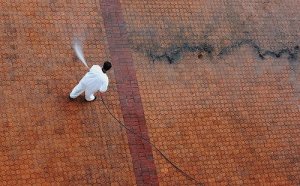Ant Best Practices: Provide a clean target
•
In the last post, we discussed the importance of good help. Today, the best practice we're going to review (just joined us? have a look here) is provide a clean target. It's pretty straightforward. As you change code (especially renaming source files), you'll need to delete old files. You might as well automate the process.
I have seen builds that don't use a clean target. But then generally these builds are relying on some other process, like nuking the entire checkout and starting again. It's easier to have a clean target, honest.
You'd think that would be the end of it. Make a target called 'clean'. Make it clobber some compiled code and generated artifacts. But while you go creating your new target, think about a couple of things:
- How many different files and directories do you need to delete? Ideally, it should be one directory. Life becomes very simple when you have a single tree to clean. Especially as you often end up making the opposite of a clean target to add directories back in.
- Did I say delete? If you have a single directory that the rest of the build depends on, check in into source control. You can often configure your VCS to ignore the contents (like cvsignore or svn:ignore) of the build directory. Then you can guarantee that it's always there, but not have to worry about the built artifacts showing up when you go to commit.
Here's one that I prepared earlier:
<project>
<target name="clean">
<delete>
<fileset dir="${build.dir}">
<include name="**/*" />
</fileset>
</delete>
</target>
</project>
Eric. You're on the money again.
